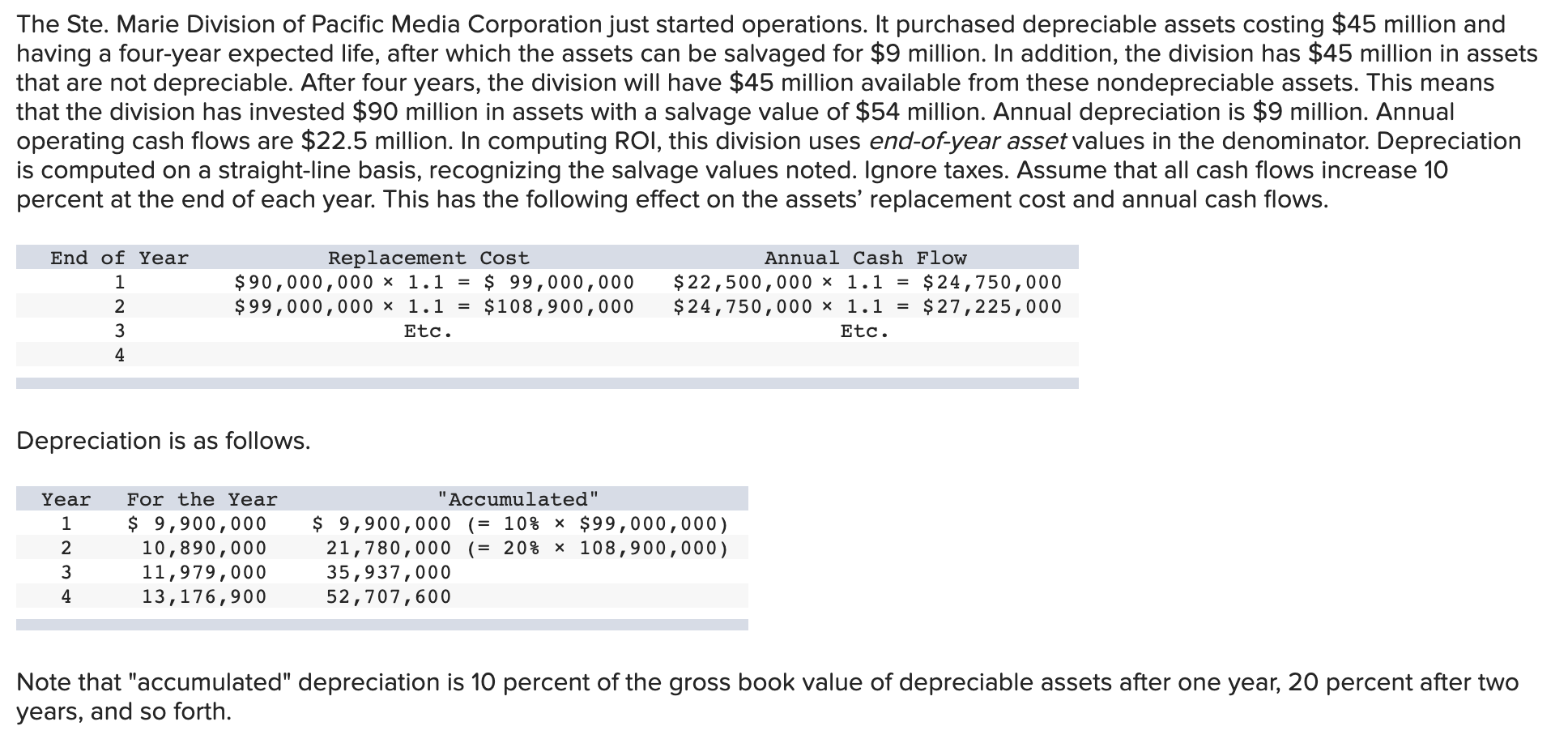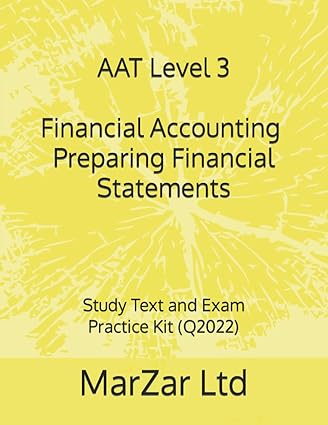


The Ste. Marie Division of Pacific Media Corporation just started operations. It purchased depreciable assets costing $45 million and having a four-year expected life, after which the assets can be salvaged for $9 million. In addition, the division has $45 million in assets that are not depreciable. After four years, the division will have $45 million available from these nondepreciable assets. This means that the division has invested $90 million in assets with a salvage value of $54 million. Annual depreciation is $9 million. Annual operating cash flows are $22.5 million. In computing ROI, this division uses end-of-year asset values in the denominator. Depreciation is computed on a straight-line basis, recognizing the salvage values noted. Ignore taxes. Assume that all cash flows increase 10 percent at the end of each year. This has the following effect on the assets' replacement cost and annual cash flows. End of Year AWNE Replacement Cost $90,000,000 x 1.1 = $ 99,000,000 $99,000,000 ~ 1.1 = $108,900,000 Etc. Annual Cash Flow $22,500,000 ~ 1.1 = $ 24,750,000 $24,750,000 x 1.1 = $27, 225,000 Etc. Depreciation is as follows. Year NM + For the Year $ 9,900,000 10,890,000 11,979,000 13,176,900 "Accumulated" $ 9,900,000 (= 10% * $ 99,000,000) 21,780,000 (= 20% * 108,900,000) 35,937,000 52,707,600 4 Note that "accumulated" depreciation is 10 percent of the gross book value of depreciable assets after one year, 20 percent after two years, and so forth. Req A and B ReqC and D Compute ROI using historical cost, net book value and gross book value. (Enter your answers as a percentage rounded to 1 decimal place (i.e., 32.1).) Historical Cost ROI Net Book Value Gross Book Value 19.4 % 17.5 25.3 % 20.3 % Year 1 Year 2 Year 3 Year 4 Req A and B Req C and D Compute ROI using current cost, net book value and gross book value. (Enter your answers as a percentage rounded to 1 decimal place (i.e., 32.1).). ROI Current Cost Net Book Value Gross Book Value Year 1 Year 2 Year 3 Year 4 The Ste. Marie Division of Pacific Media Corporation just started operations. It purchased depreciable assets costing $45 million and having a four-year expected life, after which the assets can be salvaged for $9 million. In addition, the division has $45 million in assets that are not depreciable. After four years, the division will have $45 million available from these nondepreciable assets. This means that the division has invested $90 million in assets with a salvage value of $54 million. Annual depreciation is $9 million. Annual operating cash flows are $22.5 million. In computing ROI, this division uses end-of-year asset values in the denominator. Depreciation is computed on a straight-line basis, recognizing the salvage values noted. Ignore taxes. Assume that all cash flows increase 10 percent at the end of each year. This has the following effect on the assets' replacement cost and annual cash flows. End of Year AWNE Replacement Cost $90,000,000 x 1.1 = $ 99,000,000 $99,000,000 ~ 1.1 = $108,900,000 Etc. Annual Cash Flow $22,500,000 ~ 1.1 = $ 24,750,000 $24,750,000 x 1.1 = $27, 225,000 Etc. Depreciation is as follows. Year NM + For the Year $ 9,900,000 10,890,000 11,979,000 13,176,900 "Accumulated" $ 9,900,000 (= 10% * $ 99,000,000) 21,780,000 (= 20% * 108,900,000) 35,937,000 52,707,600 4 Note that "accumulated" depreciation is 10 percent of the gross book value of depreciable assets after one year, 20 percent after two years, and so forth. Req A and B ReqC and D Compute ROI using historical cost, net book value and gross book value. (Enter your answers as a percentage rounded to 1 decimal place (i.e., 32.1).) Historical Cost ROI Net Book Value Gross Book Value 19.4 % 17.5 25.3 % 20.3 % Year 1 Year 2 Year 3 Year 4 Req A and B Req C and D Compute ROI using current cost, net book value and gross book value. (Enter your answers as a percentage rounded to 1 decimal place (i.e., 32.1).). ROI Current Cost Net Book Value Gross Book Value Year 1 Year 2 Year 3 Year 4









